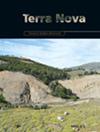Tsunami potential in the Makran subduction zone: Amplification effects from earthquake rupture directivity and speed
IF 1.7
3区 地球科学
Q2 GEOSCIENCES, MULTIDISCIPLINARY
引用次数: 0
Abstract
The Makran subduction zone has historically experienced major earthquakes and tsunamis. Here, we integrate fault morphology, InSAR measurements, and high-resolution bathymetry to quantitively evaluate potential future tsunami sources and tsunami wave characteristics. We systematically investigate how earthquake rupture speed and direction could affect tsunami hazards for the Makran region. Our analyses reveal the following new understanding: (1) The estimated maximum slip deficit in the Makran region southeast of the Gwadar port is >4 m since the last significant 1851 rupture; (2) Earthquakes with finite rupture speed investigated in the range of 300–1,000 m/s are calculated to generate higher tsunami waves than the static rupture model; (3) For an east-to-west rupture direction, the tsunami waves are calculated to arrive at the Gwadar port 3–5 mins later but with higher waves than the static rupture model. Together, our results highlight the importance of the source earthquake rupture speed and directivity in controlling tsunamigenic effects.马克兰俯冲带的海啸潜势:来自地震破裂方向和速度的放大效应
马克兰俯冲带历史上经历过大地震和海啸。在这里,我们将断层形态、InSAR测量和高分辨率测深技术结合起来,定量评估未来潜在的海啸震源和海啸波特征。我们系统地研究了地震破裂速度和方向如何影响马克兰地区的海啸灾害。我们的分析揭示了以下新的认识:(1)自1851年最后一次重大破裂以来,瓜达尔港东南的Makran地区估计的最大滑动亏缺为4 m;(2)有限破裂速度在300-1,000 m/s范围内的地震比静态破裂模型产生更高的海啸波;(3)在东向西破裂方向上,计算出的海啸波到达瓜达尔港的时间比静态破裂模型晚3 ~ 5 min,但波高。总之,我们的结果强调了震源破裂速度和方向性在控制海啸效应中的重要性。
本文章由计算机程序翻译,如有差异,请以英文原文为准。
求助全文
约1分钟内获得全文
求助全文
来源期刊

Terra Nova
地学-地球科学综合
CiteScore
4.80
自引率
8.30%
发文量
59
审稿时长
2.3 months
期刊介绍:
Terra Nova publishes short, innovative and provocative papers of interest to a wide readership and covering the broadest spectrum of the Solid Earth and Planetary Sciences. Terra Nova encompasses geology, geophysics and geochemistry, and extends to the fluid envelopes (atmosphere, ocean, environment) whenever coupling with the Solid Earth is involved.
 求助内容:
求助内容: 应助结果提醒方式:
应助结果提醒方式:


